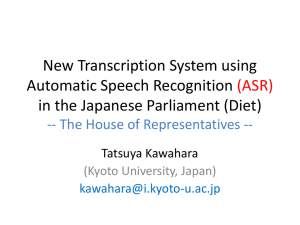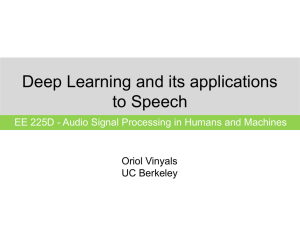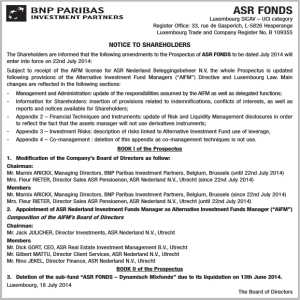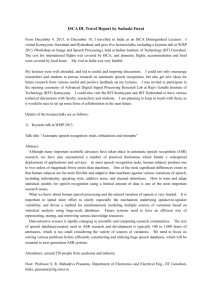Supplementary Information S1: Population history and development
advertisement
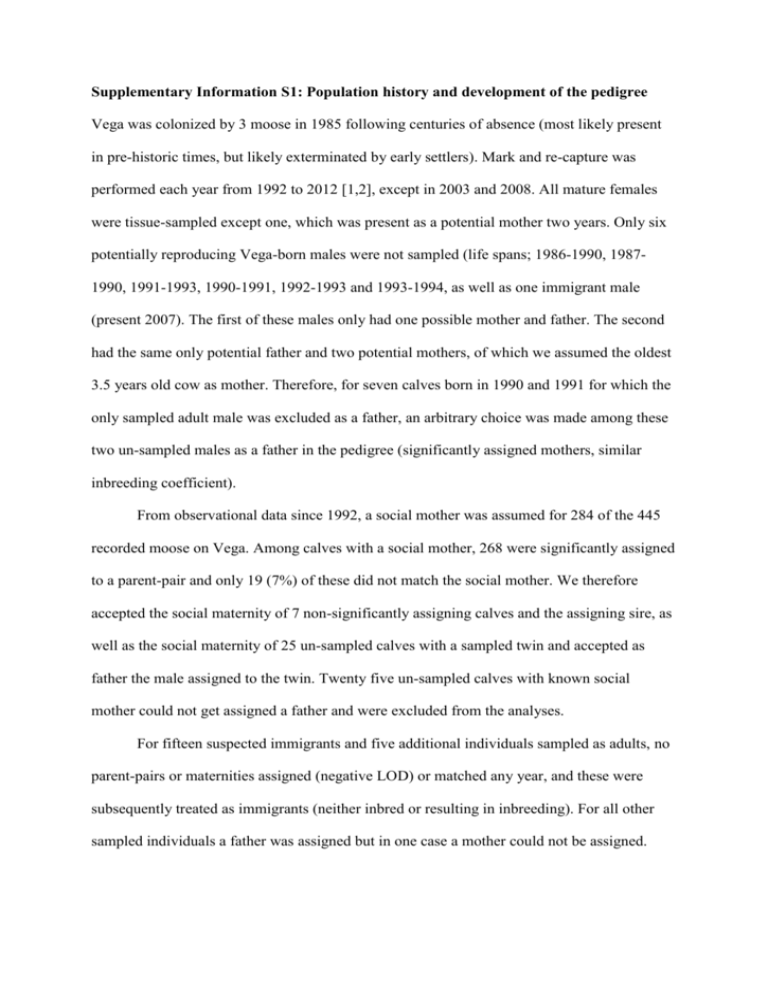
Supplementary Information S1: Population history and development of the pedigree Vega was colonized by 3 moose in 1985 following centuries of absence (most likely present in pre-historic times, but likely exterminated by early settlers). Mark and re-capture was performed each year from 1992 to 2012 [1,2], except in 2003 and 2008. All mature females were tissue-sampled except one, which was present as a potential mother two years. Only six potentially reproducing Vega-born males were not sampled (life spans; 1986-1990, 19871990, 1991-1993, 1990-1991, 1992-1993 and 1993-1994, as well as one immigrant male (present 2007). The first of these males only had one possible mother and father. The second had the same only potential father and two potential mothers, of which we assumed the oldest 3.5 years old cow as mother. Therefore, for seven calves born in 1990 and 1991 for which the only sampled adult male was excluded as a father, an arbitrary choice was made among these two un-sampled males as a father in the pedigree (significantly assigned mothers, similar inbreeding coefficient). From observational data since 1992, a social mother was assumed for 284 of the 445 recorded moose on Vega. Among calves with a social mother, 268 were significantly assigned to a parent-pair and only 19 (7%) of these did not match the social mother. We therefore accepted the social maternity of 7 non-significantly assigning calves and the assigning sire, as well as the social maternity of 25 un-sampled calves with a sampled twin and accepted as father the male assigned to the twin. Twenty five un-sampled calves with known social mother could not get assigned a father and were excluded from the analyses. For fifteen suspected immigrants and five additional individuals sampled as adults, no parent-pairs or maternities assigned (negative LOD) or matched any year, and these were subsequently treated as immigrants (neither inbred or resulting in inbreeding). For all other sampled individuals a father was assigned but in one case a mother could not be assigned. In total, this resulted in a pedigree which in numbers of generations counted up to seven for females and up to five for males. Table S1. Yearly numbers of calves born and number of adult potential moose breeders (being potential parents the following year), and numbers of adults and calves culled each year on Vega between 1986 and 2010, with the included number of un-sampled individuals in parentheses. Year Calves born 1985 Females present Bulls present Adults culled Calves culled 1 1 0 0 1986 1 2 1 0 0 1987 3 2 2 (1) 0 0 1988 3 4 3 (2) 0 0 1989 4 5 4 (2) 2 0 1990 7 7 5 (2) 2 0 1991 9 12 (1) 6 (1) 1 1 1992 18 12 (1) 11 (1) 1 3 1993 21 13 19 (2) 14 0 1994 16 13 22 (1) 29 0 1995 15 12 9 7 4 1996 20 13 13 10 5 1997 19 17 7 6 9 1998 21 17 6 8 10 1999 26 15 7 7 12 2000 25 15 11 10 12 2001 22 17 13 11 8 2002 25 19 12 9 12 2003 26 18 12 11 12 2004 21 19 15 9 12 2005 23 18 16 (1) 9 18 2006 19 16 14 (1) 9 12 2007 23 15 13 (1) 3 15 2008 22 14 16 10 16 2009 18 17 16 8 12 Supplementary Information S2: Inbreeding avoidance models and AICc-based ranking of candidate models About the structure of the global model If an interaction was included in a candidate model, its main effects were retained. Models that included the main effect of σfMating or AgeMales and not their interactions with fMating were not considered as candidate models as we primarily were interested in population structure on inbreeding avoidance (measured by fMating), and not population structure on the probability of mate. The annual mean fMating varied over the study period. We can expect that it is the relative fMating a giving breeding season that is important, i.e. the fMating of mates relative to other mates the same breeding season. To test this, we calculated the relative fMating by centralising fMating within year (i.e. subtracting annual mean from each potential breeding attempt's fMating). We then reran the model selection, replacing fMating with the relative fMating. This did not affect the rank of the highest ranked models, and the pattern between relative fMating and P(realisation) was similar as for the absolute fMating. We therefore choose to use absolute fMating in the analyses. Table S2. AICc-based ranking of candidate models explaining probability that potential mating events were realised. ΔAICc is the difference in AICc between a model and the highest ranked model, whereas AICc-weights can be considered the likelihood that a model is the true model, given that one of the candidate models is the true model [3]. Only models with ΔAICc < 2 are shown, in addition to the highest ranked model without fMating (rank 12) and the full model (rank 108). NAdult and ASR were included in all candidate models. For variables explanation, see main text. Rank Model specification ΔAICc AICcweight 1 fMating + ASR + NAdult + AgeMales + fMating*ASR + fMating*NAdult + 0.00 0.082 0.08 0.079 1.31 0.043 1.46 0.040 1.67 0.036 1.76 0.034 ASR*NAdult + fMating*ASR*NAdult 2 fMating + ASR + NAdult + fMating*ASR + fMating*NAdult + ASR*NAdult + fMating*ASR*NAdult 3 fMating + ASR + NAdult + AgeMales + fMating*ASR + fMating*NAdult + fMating*ASR*NAdult + fMating*AgeMales 4 fMating + ASR + NAdult + fMeanMating + fMating*ASR + fMating*NAdult + fMating*ASR*NAdult 5 fMating + ASR + NAdult + AgeMales + fMeanMating + fMating*ASR + fMating*NAdult + fMating*ASR*NAdult 6 fMating + AgeMales + σfMating + ASR + NAdult + fMating*ASR + fMating*NAdult + ASR*NAdult + fMating*ASR*NAdult 12 ASR * NAdult 3.29 0.016 108 fMating + fMeanMating + σfMating + ASR + NAdult + AgeMales + 8.08 0.001 fMating*fMeanMating + fMating*σfMating + fMating*ASR + fMating*NAdult + fMating* AgeMales + ASR*NAdult + fMating*ASR*NAdult Supplementary Information S3: Data summary of population properties inbreeding coefficient and mating probability Table S3. Mean (SD, N) inbreeding coefficient, fMating, based on identity-by-descent [4] for offspring from potential mating events that were realised (resulted in offspring) and nonrealised for years with adult sex ratio (NMales/NFemales), ASR, and adult population size, NAdult, above or below the median from the data used in the statistical models in Table S2. fMating for realised mating fMating for non-realised mating events events Low ASR (≤ 0.8) 0.145 (SD = 0.109, N = 154) 0.148 (SD = 0.103, N = 1229) High ASR (> 0.8) 0.106 (SD = 0.113, N = 92) 0.124 (SD = 0.103, N = 1224) Low NAdult (≤ 30) 0.140 (SD = 0.115, N = 170) 0.135 (SD = 0.103, N = 1402) High NAdult (> 30) 0.107 (SD = 0.100, N = 76) 0.137 (SD = 0.104, N = 1051) References [1] Sæther, B.-E., Solberg, E. J., Heim, M., Stacy, J. E., Jakobsen, K. S. & Olstad, R. 2004 Offspring sex ratio in moose Alces alces in relation to paternal age: an experiment. Wildl. Biol. 10, 51–57. [2] Solberg, E. J., Rolandsen, C. M., Heim, M., Linnell, J. D. C., Herfindal, I. & Sæther, B.E. 2010 Age and sex-specific variation in detectability of moose (Alces alces) during the hunting season: implications for population monitoring. Eur. J. Wildl. Res. 56, 871–881. [3] Burnham, K. P. & Anderson, D. R. 2002 Model selection and multimodel inference. A practical information-theoretic approach. New York: Springer. [4] Wright, S. 1922 Coefficients of inbreeding and relationship. Am. Nat. 56, 330-338.
